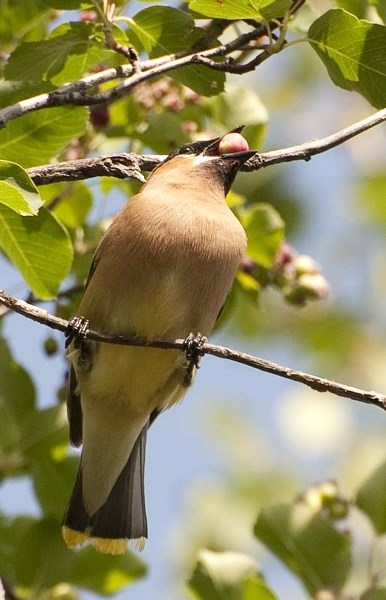Canadians should protect at least half the boreal forest from development if they want to support waxwings and blackbirds, suggests a new report.
Ducks Unlimited and the Boreal Songbird Initiative released a report last week calling on Canada to protect at least half of the boreal forest from large-scale industrial development in order to preserve migratory bird populations.
The boreal is one of the largest intact forests in the world and hosts one to three billion nesting birds each summer, said report co-author Jeff Wells. The bufflehead, bohemian waxwing and common goldeneye are just some of the 300 bird species that rely on the boreal for reproduction.
The boreal is one of the world’s biggest carbon sinks and the home of about 25 per cent of the world’s wetlands, the report noted. The natural services provided by the forest have been valued at about $700 billion a year.
“To maintain all these values you care about, you have to maintain on average about 50 per cent of the landscape,” Wells said, citing the latest research.
Doing so will help the populations of many local birds that are currently in decline, such as the evening grosbeak, which has declined some 70 per cent in the last 40 years.
Wells said Canada is making some progress on this front, with Ontario and Quebec both agreeing to protect half their forests. Still, just 12 per cent of the boreal is currently protected.
The study is available at www.borealbirds.org.
Wheat, rice, corn and other staple foods will become less nutritious over the next few decades due to climate change, suggests a new report.
University of Illinois plant biologist Andrew Leakey and an international team of researchers published a study on the effects of rising carbon dioxide (CO2) levels on common crops this week in Nature.
Leakey said the team wanted to figure out how crops will be affected by rising CO2 levels over the next century, as previous tests had proved inconclusive.
To do this, the team grew 40 varieties of rice, wheat, corn, soybeans, field peas and sorghum in seven locations in Japan, Australia and the U.S. Each was grown outdoors below a ring of computer-controlled pipes that exposed them to more CO2 than usual, and compared to other plants grown at the same sites under normal atmospheric conditions.
Testers ended up with about 10 times more data than had ever been collected before in these sorts of experiments, Leakey said.
The team exposed the plants to the equivalent of 546 to 586 parts per million of atmospheric CO2 – the level the world is likely to hit in the next 40 to 60 years even with further emission reduction efforts, and a level that the Intergovernmental Panel on Climate Change predicts will cause a three to four degree rise in overall temperature.
The team found that wheat, rice, pea and soybean plants exposed to elevated CO2 levels had significantly less nutrients in them than their unexposed counterparts. Exposed wheat in particular had about nine per cent less zinc, six per cent less protein and five per cent less iron than wheat grown under current atmospheric conditions.
“A key group of crops grown at a wide range of conditions all around the world are showing decreased nutrient concentrations,” Leakey said.
About two billion people get about 70 per cent of their daily-required dose of these nutrients from these crops, he continued. Many crops are already deficient in these nutrients.
“If we are seeing a decrease in the amount of those nutrients that are in food as a result of rising CO2, it will likely have a detrimental effect on human health.”
Leakey said the reasons for this decline are unclear, and likely involve several changes in the plants themselves. He also noted that some of the plants produced more seeds under higher CO2 conditions.
Leakey called for a multi-pronged solution, one by which the world reduces its greenhouse gas emissions and develops new crop varieties that can grow in high-CO2 environments without losing nutrition.
“It’s going to require a lot of work,” he said.




